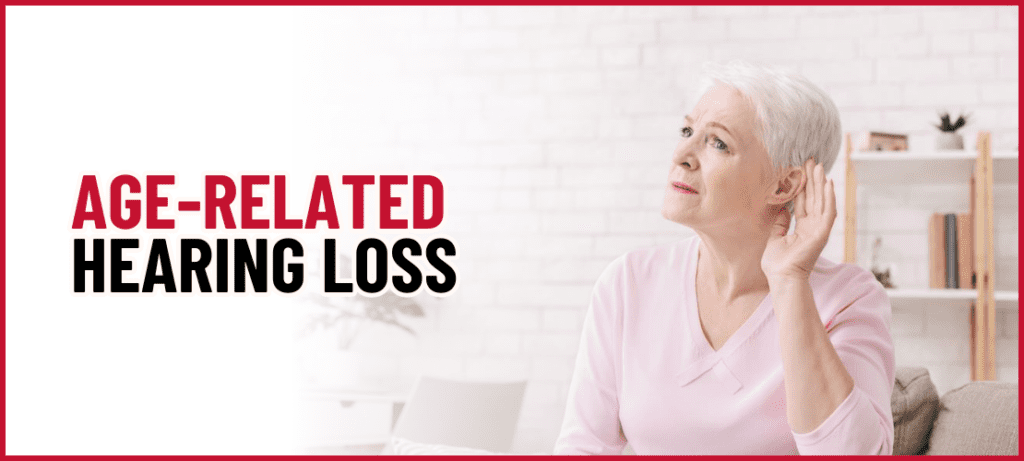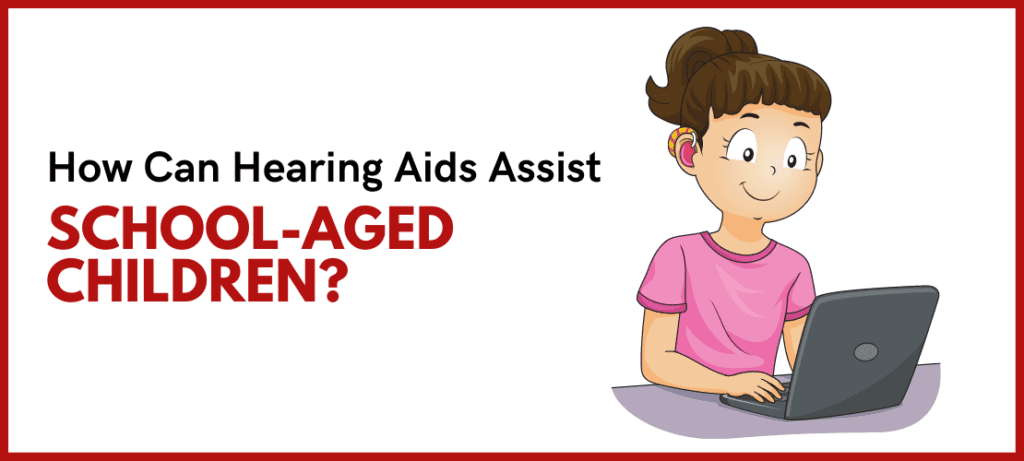Hearing Aids- Benefits, Different Styles/Types and How They Work
Table of Contents

Hearing aids can be life-changing, bringing back the world of sound to people with hearing disabilities. Whether it’s the joy of hearing a loved one’s laughter or the peaceful chirping of birds, hearing aids help bring back those everyday sounds that make life better.
But how do hearing aids work? If you’re curious about different kinds of hearing aids and how they work or how to choose the best one for your needs, this blog will cover it all.
What is a Hearing Aid?
A hearing aid is a pretty small electronic device that enhances sounds so that people with hearing disabilities can more easily identify sounds around them.
There are three fundamental parts to a hearing aid:
- a microphone, which captures and converts sounds to electrical signals;
- an amplifier, which increases the volume or strength of those signals;
- and a speaker (receiver) which delivers clear and audible sound into the ear canal;
In addition, there’s a battery that powers the device, with options ranging from disposable to rechargeable.
Benefits of Using Hearing Aids
The benefits of hearing aids go beyond restoring hearing abilities; they benefit the regular activities in an individual’s life. Some of the main advantages include:
- Improved Communication: Hearing aids clarify sounds to help understand speeches and communication in any environment and help users engage socially.
- Reduced Cognitive Strain: It reduces the mental effort in interpreting sounds, reducing the likelihood of developing cognitive fatigue.
- Increased Safety: The ability to hear environmental sounds like alarms, doorbells, or approaching traffic ensures better personal safety.
- Better Heart Health: The research suggests reducing medical intervention and improving heart health.
How Do Hearing Aids Work?
Hearing aids use digital technology to transform sound into electrical signals, process them, amplify them, and send them inside the ear. Let’s break down how hearing aids work.
How Sound is Processed in Hearing Aids
Every hearing aid has a couple of critical components that interact, such as a microphone, an amplifier, and a receiver or speaker. When sound enters the hearing aid, it undergoes several processes to enhance quality:
Some of the common sensorineural hearing loss symptoms may include:
- Noise reduction: The noise in the background will have been removed while speech remains prominent
- Feedback cancellation: This entails the reduction of whistling sounds at high pitch levels for comfort.
- Directional Microphones: These microphones adjust to point toward sounds coming from a particular direction, which is ideal for noisy environments.
Are There Different Styles/Types of Hearing Aids?
Yes, there are different kinds of hearing aids, and how they work depends mainly on their design and style.
Behind-the-ear (BTE) Hearing Aids
These devices fit comfortably behind the ear, with a tube connecting them to an ear mold inside the ear canal. BTE hearing aids are durable and versatile, appropriate for various degrees of hearing loss, from mild to profound.
Receiver-in-the-Canal (RIC) Hearing Aids
This type of BTE hearing aid has a speaker or receiver outside the hearing aid case. It is directly inserted into the patient’s ear and covered by a dome or sleeves to make it more invisible.
In-the-ear (ITE) Hearing Aids
ITE is designed to be placed inside the outer ear, so the choice it offers can be less obvious for a person who experiences mild or severe hearing impairment. These are also more manageable because they are bigger in size compared to other models.
Canal Aids
Canal aids, including CIC (completely in the canal) and ITC (in the canal), fit deep in the ear canal and stay discreet. They are a good option for slight to moderately significant hearing loss; however, they’re usually small in size, which demands more careful handling.
Do All Hearing Aids Work the Same Way?
Now that you know how hearing aids work, you should understand that all types don’t work the same way. While all hearing aids amplify sound, their functionality varies greatly with the technology and type. Some offer sophisticated programmability for different listening environments, while others are more straightforward amplifiers. Different types of hearing aids vary in the way they work, and the choice depends strictly on the specific needs.
How to Get Hearing Aids
To understand which hearing aid is a perfect fit for you, consider a few factors.
How to Know Which Hearing Aid Would Work Best for You
- Severity of Hearing Loss: Certain devices work best for partial hearing loss, while others support severe or complete hearing loss.
- Lifestyle Requirements: Some may desire a hearing aid that can provide focused hearing in a social environment, while some are meant for very active, fast-paced lifestyles.
- Technology Preferences: Some may appreciate the advanced features, such as Bluetooth or noise reduction, while others may prefer minimal functioning.
Before You Buy Hearing Aids
Consulting an audiologist is a crucial step before making a purchase decision to get the most suitable hearing aid, depending on your degree of hearing loss. They can help you with personalized evaluations and recommendations
- Degree of hearing loss: Identify the severity of your hearing loss so you can get a hearing aid with the right level of amplification.
- Listening Need: Consider your daily lifestyle, such as work and social gatherings, to select a hearing aid that suits your specific needs.
- Special Requirements: You can opt for additional features like Bluetooth compatibility or noise-cancellation to improve your hearing experience.
- Cosmetic Consideration: Choose a style and design that fits your ear comfortably and doesn’t look odd.
Where Can I Buy Hearing Aids?
Over-the-Counter vs. Prescription
Over-the-counter aids are convenient and affordable but cannot be tailored to individual needs, while prescription aids are customized for an individual’s needs.
Contact Quality Hearing Care, a leading audiology clinic in Mumbai that offers personalized consultation. Our board-certified audiologist will examine your hearing needs by conducting an extensive test and recommend hearing aids depending on your hearing profile.
Getting Used to Your Hearing Aid
Wearing a hearing aid for the first time can feel odd, but users can get the most from their device with patience and gradual adjustment.
How Can I Adjust to My Hearing Aid?
Begin using the new hearing aid for just a few hours daily. Gradually increase wear time because your brain will require time to adapt to processing amplified sound.
How Can I Care for My Hearing Aid?
If you are taking care of a patient with hearing aid, you need to ensure proper care to keep the hearing aid in good condition.
- Clean the device regularly to remove earwax and debris
- Replace or keep batteries charged to prevent forced shutdown.
- Store the instrument in a dry safe to avoid moisture damage
A Note About Hearing Aids by Dr. Prabha
Today’s hearing aids are not simple amplifiers but highly sophisticated electronic devices that provide sound according to a user’s specific needs. The latest technology is the integration of Artificial Intelligence in the Hearing Aid
The time required to observe the benefit of a hearing aid depends from person to person, and that’s because the brain has to relearn to process the sounds with the use of a hearing aid, so you should not get frustrated immediately and Take help of your professional to overcome this hurdles.
It also helps to use assistive listening devices and hearing aids for improved communication in more challenging listening situations.
Frequently Asked Questions
Hearing aids are for those with residual hearing capability. In individuals who are entirely deaf, a cochlear implant would be more effective than a hearing aid.
It may take several weeks or months to get accustomed to hearing aids. This is because your brain needs to get used to new sounds.
Some hearing aids feature built-in tinnitus-masking functions that help eliminate the ringing or buzzing associated with tinnitus.
The lifespan of a hearing aid is usually 5 years if the maintenance is done well.
Audiologists usually ask users to remove hearing aids before sleeping to allow their ears to rest and prevent accidental damage to the device.
Related Post
-
 2025 Signia Hearing Aid Price
2025 Signia Hearing Aid Price -
 Understanding Communication Issues in Elderly Patients: The Distinction Between Hearing and Listening
Understanding Communication Issues in Elderly Patients: The Distinction Between Hearing and Listening -
 Hearing Loss: Types, Symptoms, Causes & Treatment
Hearing Loss: Types, Symptoms, Causes & Treatment -
 Age-Related Hearing Loss (Presbycusis)
Age-Related Hearing Loss (Presbycusis) -
 How to Safely and Properly Clean Your Ears- Methods & What to Avoid
How to Safely and Properly Clean Your Ears- Methods & What to Avoid -
 Hearing Aids- Benefits, Different Styles/Types and How They Work
Hearing Aids- Benefits, Different Styles/Types and How They Work -
 What Level Of Hearing Loss Requires A Hearing Aid?
What Level Of Hearing Loss Requires A Hearing Aid? -
 Differences Between Conductive and Sensorineural Hearing Loss
Differences Between Conductive and Sensorineural Hearing Loss -
 When is the correct time to upgrade Hearing Aids?
When is the correct time to upgrade Hearing Aids? -
 How Can Hearing Aids Assist School Aged Children?
How Can Hearing Aids Assist School Aged Children? -
 The Impact of Hearing Loss on Cognition
The Impact of Hearing Loss on Cognition -
 Hearing Resides in Your Brain, Not Just Your Ears
Hearing Resides in Your Brain, Not Just Your Ears -
 Exploring Link Between Hearing Loss and Depression_ Breaking the Silence
Exploring Link Between Hearing Loss and Depression_ Breaking the Silence -
 New Hearing Aids? Here’s How To Make The Most Of The Device
New Hearing Aids? Here’s How To Make The Most Of The Device -
 The Unseen Link Between Diabetes and Hearing Loss
The Unseen Link Between Diabetes and Hearing Loss
















